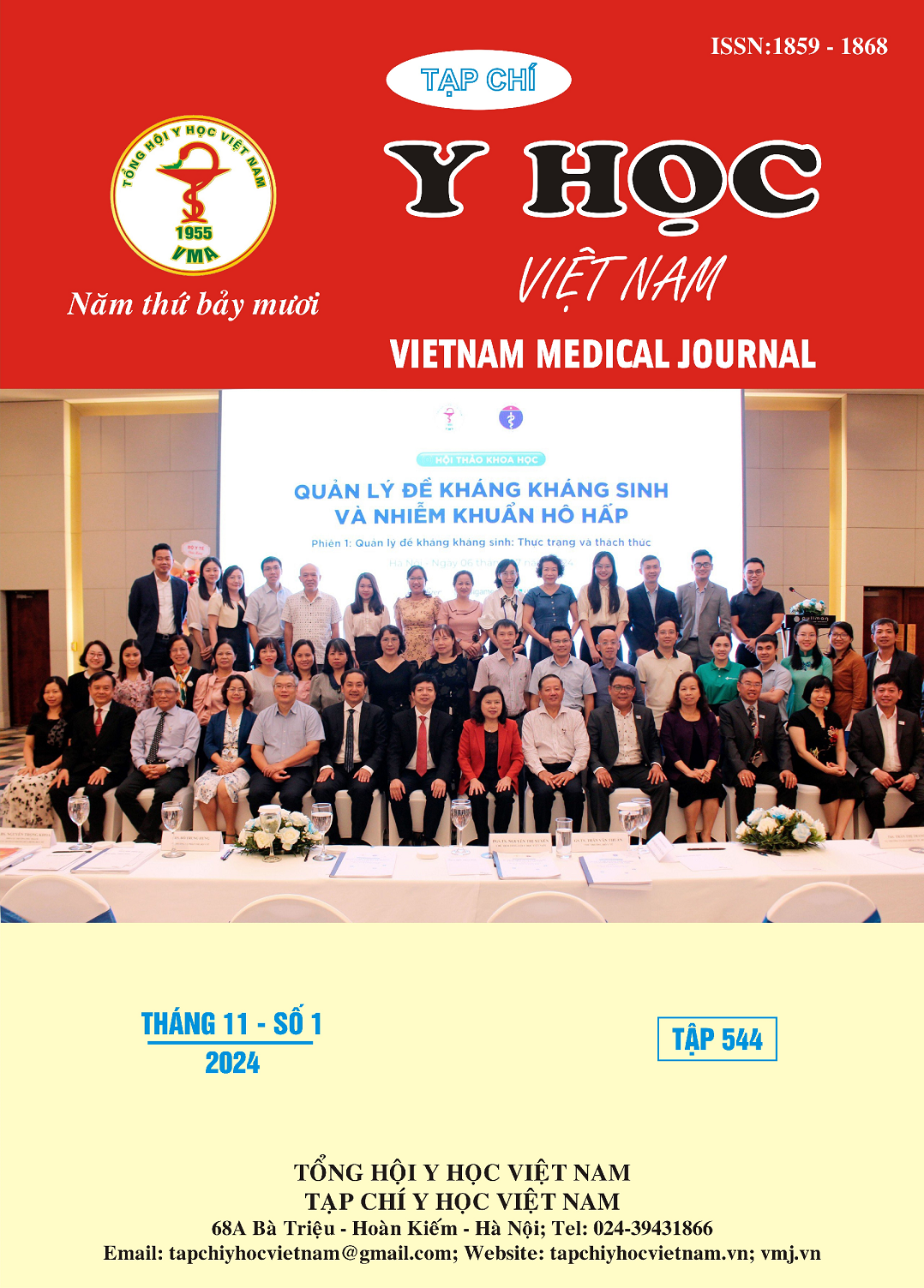CHARACTERISTICS AND OBESITY DEGREE OF OBESE CHILDREN AT THE NATIONAL CHILDREN'S HOSPITAL IN 2023
Main Article Content
Abstract
The prevalence of obesity is increasing in both developing and developed countries and has become a major public health problem. It is estimated that nearly half of the world's adult population will be affected by obesity by 2030. Objective: Describe some characteristics and obesity degree of obese children at the National Children's Hospital in 2023. Subjects and methods: Cross-sectional study of 437 children aged 5 - 18 who met the World Health Organization's obesity standards in 2023 at the National Children's Hospital. Results: Distribution of obesity degree was: 64.45% from +2SD to +3SD; 34.55% from > +3SD. Height distribution of obese children: 89.93% within normal range -2SD to 2SD; 9.15% > +2SD; only 0.92% from - 3SD to – 2SD. Gender distribution was: 64.3% in boys; 35.7% in girls. Obesity degree by gender was in boys: 3.19 ± 1.24, in girls: 2.78 ± 0.66. There was no difference between birth weight and obesity rate. Conclusions: The number of children examined for obesity is increasing, the risk of metabolic disorders is high. The degree of obesity in children was grade I (2SD - 3SD). School education about the risks of obesity and appropriate lifestyle choices for children and adolescents are nessessary.
Article Details
Keywords
Overweight, obesity
References
2. Kelly T, Yang W, Chen C-S, et al (2008). Global burden of obesity in 2005 and projections to 2030. Int J Obes (Lond), 32(9), 1431-1437.
3. Abarca-Gómez L, Abdeen Z.A, Hamid Z.A, et al (2017). Worldwide trends in body-mass index, underweight, overweight, and obesity from 1975 to 2016: a pooled analysis of 2416 population-based measurement studies in 128• 9 million children, adolescents, and adults. Lancet, 390(10113), 2627-2642.
4. Must A (1996). Morbidity and mortality associated with elevated body weight in children and adolescents. Am J Clin Nutri, 63(3), S445-S447.
5. Weiss R, Dziura J, Burgert T.S, et al (2004). Obesity and the metabolic syndrome in children and adolescents. N Eng J Med, 350(23), 2362-2374.
6. Trần Thị Minh Hạnh, Đỗ Thị Ngọc Diệp, Phan Nguyễn Thanh Bình cộng sự (2016). Cảnh báo thừa cân béo phì và tăng huyết áp ở trẻ tuổi học đường thành phố Hồ Chí Minh. Tạp chí Dinh dưỡng và thực phẩm, 12(4),17-24.
7. Nguyễn Lân, Phí Ngọc Quỳnh, Đỗ Thị Hải Yến và cộng sự (2022). Đặc điểm nhân trắc và tình trạng dinh dưỡng của học sinh một số trường trung học cơ sở tại Hà Nội năm 2020. Tạp chí dinh dưỡng và thực phẩm, 18(3+ 4), 88-96.
8. Nguyễn Văn Nguyên (2022). Hiệu quả bổ sung bột cải xoăn đến tình trạng dinh dưỡng, lực bóp tay, trí lực, thị lực và nhiễm khuẩn của học sinh tiểu học tại Hà Nội. Luận án tiến sĩ Y học, Viện Dinh dưỡng Quốc gia.
9. Bosy-Westphal A, Plachta-Danielzik S, Dorhofer R.P et al (2009). Short stature and obesity: positive association in adults but inverse association in children and adolescents. Br J Nutr, 102(3), 453-461.
10. Nguyễn Minh Thu và Phạm Thị Hải (2014). Nghiên cứu tình hình thừa cân, béo phì của học sinh từ 6 – 10 tuổi tại một số trường tiểu học thành phố Tam Kỳ, tỉnh Quảng Nam. Kỷ yếu các đề tài nghiên cứu khoa học của hệ truyền thông giáo dục sức khoẻ, 167 – 180.


